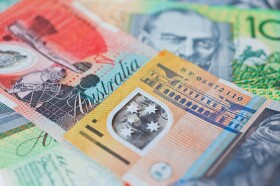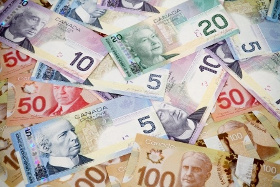The Australian dollar was very strong lately, reaching the highest level in more than a year and a half against its US counterpart last week. But some traders are worried that the currency will be unable to extend its rally, especially if the nation’s central bank remains dovish. Let’s look at fundamentals that will be driving the Australian currency this week.
The Australian economy fared relatively well during the COVID-19 pandemic as the government managed to limit the spread of the coronavirus. Strong trading ties with China also helped Australia as the Chinese economy was recovering rather fast after the pandemic. But Australia is not out of the woods yet due to the threat of the second wave of the pandemic, which looks especially strong after the surge of new cases in the Victoria region.
The Reserve Bank of Australia will announce its monetary policy decision at 4:00 GMT on Tuesday, and it will be interesting to see how the Australian policymakers will react to the latest news about the pandemic and economic developments in Australia. The general consensus is that the RBA will not expand quantitative easing and will keep its benchmark interest rate unchanged at 0.25%. Some analysts explained that cutting interest rates is not a valid option for the Australian central bank. The Australian economy highly depends on foreign investments, and investors are in large part are attracted by high interest rates (at least in comparison to many other developed nations, like the United States). While no changes to monetary policy are expected, that does not mean that the meeting will be unimportant. Market participants will closely watch the tone of the central bank’s statement. It is expected to be dovish but the statement still can hurt the Aussie if it comes out even more pessimistic then expected. Conversely, a more optimistic tone would be very beneficial to the currency.
On Wednesday, the Australian Bureau of Statistics will release a report on the gross domestic product in the second quarter of this year. The median forecast promises a sharp drop of 6.0%. Considering that the economy contracted by 0.3% in the preceding quarter, it would mean the second consecutive quarterly decline that signals the economy entering a recession.
Considering how important are developments in the Chinese economy to the economy and currency of Australia, China’s macroeconomic data can also have a strong impact on the Aussie. The official PMI figures released on Monday were good, but traders usually have more trust in private data from Markit/Caixin. While it is often worse than the government reports, analysts do not expect it to be the case this week. According to analysts’ projections ahead of the actual release, the Caixin manufacturing Purchasing Managers’ Index will show a reading of 52.6 in August. That would be just a small decrease from July’s figure of 52.8 and a solid reading above the neutral 50.0 level, signaling about a strong recovery of the manufacturing sector after the pandemic.
As for analysts’ outlook, Forex Crunch was neutral on AUD/USD, saying:
The US dollar has been under attack, but at some point we will likely see the greenback rebound due to profit-taking. Australian numbers have not been particularly strong, but investors are also worried about the deadlock in Congress over a massive fiscal stimulus package.
DailyFx, on the other hand, was bullish on the Australia dollar, stating:
As a positive knock-on effect, economic stabilization â along with aggressive support by central banks â buttresses risk appetite adds another gust of wind to AUDâs sails. Overlaying Deutsche Bankâs Australian Dollar currency index with an AUD inflation swap zero coupon (10Y) shows price growth expectations rising in tandem.
What this underscores is an underlying expectations that future economic activity will rise, and with it, price growth. As noted earlier, a change of tone in the RBAâs sense of urgency may magnify AUDâs gains, particularly if economic data domestically and in China â Australiaâs largest trading partner â shows a brighter outlook.
If you have any questions, comments, or opinions regarding the Australian Dollar, feel free to post them using the commentary form below.



Be First to Comment